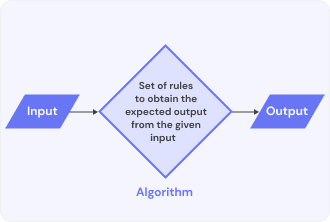Algorithm Definition

Algorithm is something built from borrowed thunder, especially when it comes to IT niche as it is about operations that help to solve tech challenges and bugs, you can imagine it as a Lego instruction to build the figure pictured on the box. Computer programming and science are not the new kids on the block for the usage of algorithms but for now it has a wide presence in literally every sphere you can imagine.
Algorithm is in the air following every tech decision you make, having a plethora of implementation from recursive to sorting breaking down problem you face if it’s dedicated to social media, being popular, winning top ranks in Google, modern computing. The main topic is 100% feels like writing symphonies with spare change owing to step-by-step approach, it tells you what to do — you follow — outcomes received.
What about the algorithm types available?
Suting to different requests, the algorithms can not be named in one brief article but we have decided to make the impossible and introduce you to the core ones that you meet in your daily life (yes, even landing on this page is their merit).
- Sorting kind is a common thing for students and people working with sheets as their study and work routine includes working with numbers or items, terms that need to be sorted by A to Z or from the smallest to largest. The last named you can also experience shopping online.
- Searching model brought you here but it also works offline when a person looks for a specific item and uses the algorithm to find it, but we are tech-savvy people, so will focus on the linear and binary search that can be used for data stored.
- Backtracking is the one definitely used for computer programs as it helps to solve large issues trying to substitute values for a valid resolution until it works out. To put it simply, you have a problem to be solved, and you try to resolve it while keeping selecting the ways that can be reliable, until the challenge is overcome.
Why is it important for information technology?
We have the answer — because it’s easier than inventing the wheel every time you meet a problem in the first place, and secondly, it reduces the risk of failure as you have (or create if it’s something new) the guide. Let’s imagine you have a bug in the code line 6549, and you can use the algorithm to solve it, or you can spend more time and decrease the effectiveness of your work.
Yet, it depends on the type of project you are working on, and we would say that the tech industry has space for creativity as well, and you can propose more effective solutions to common problems, it’s up to you.